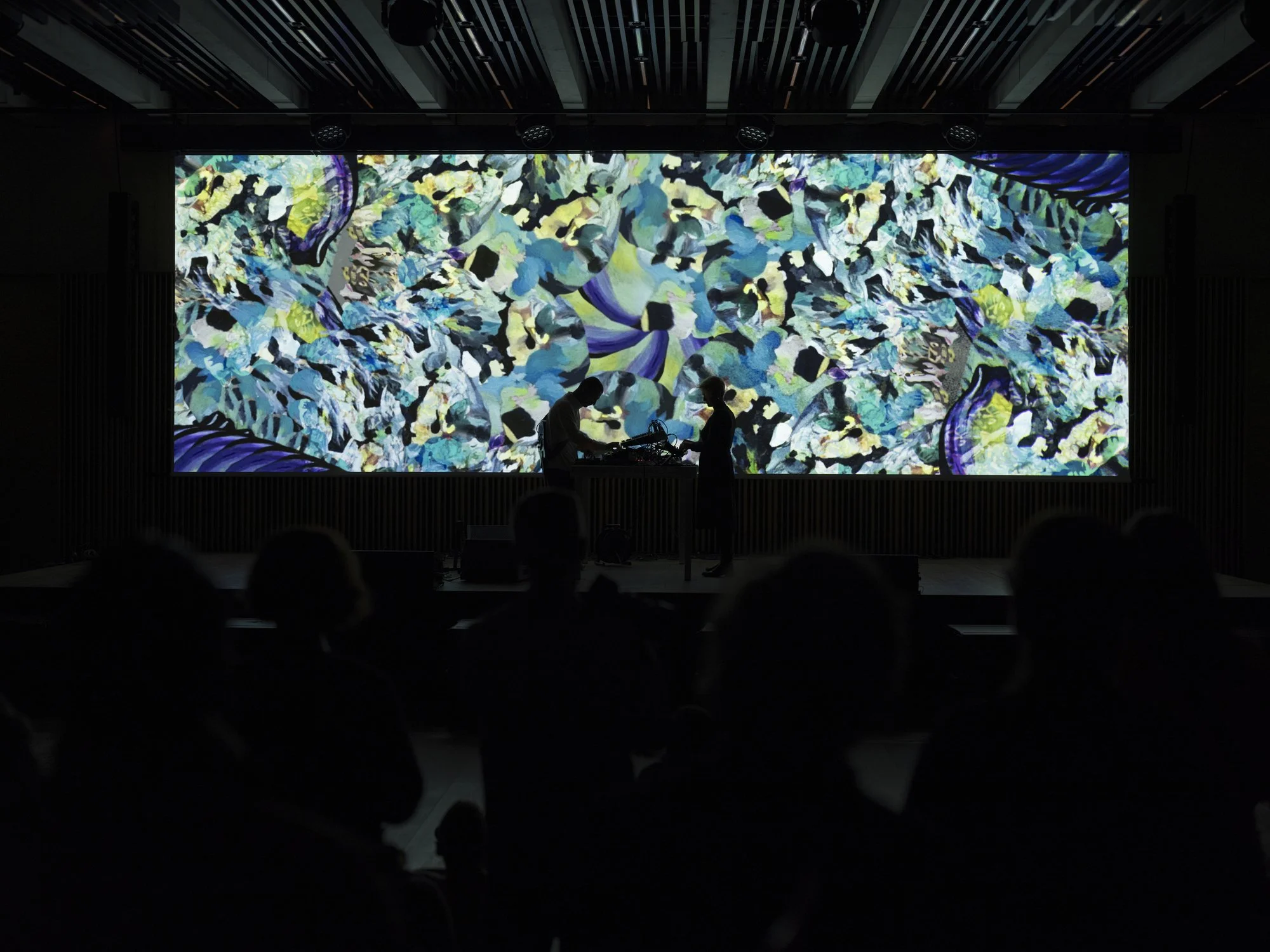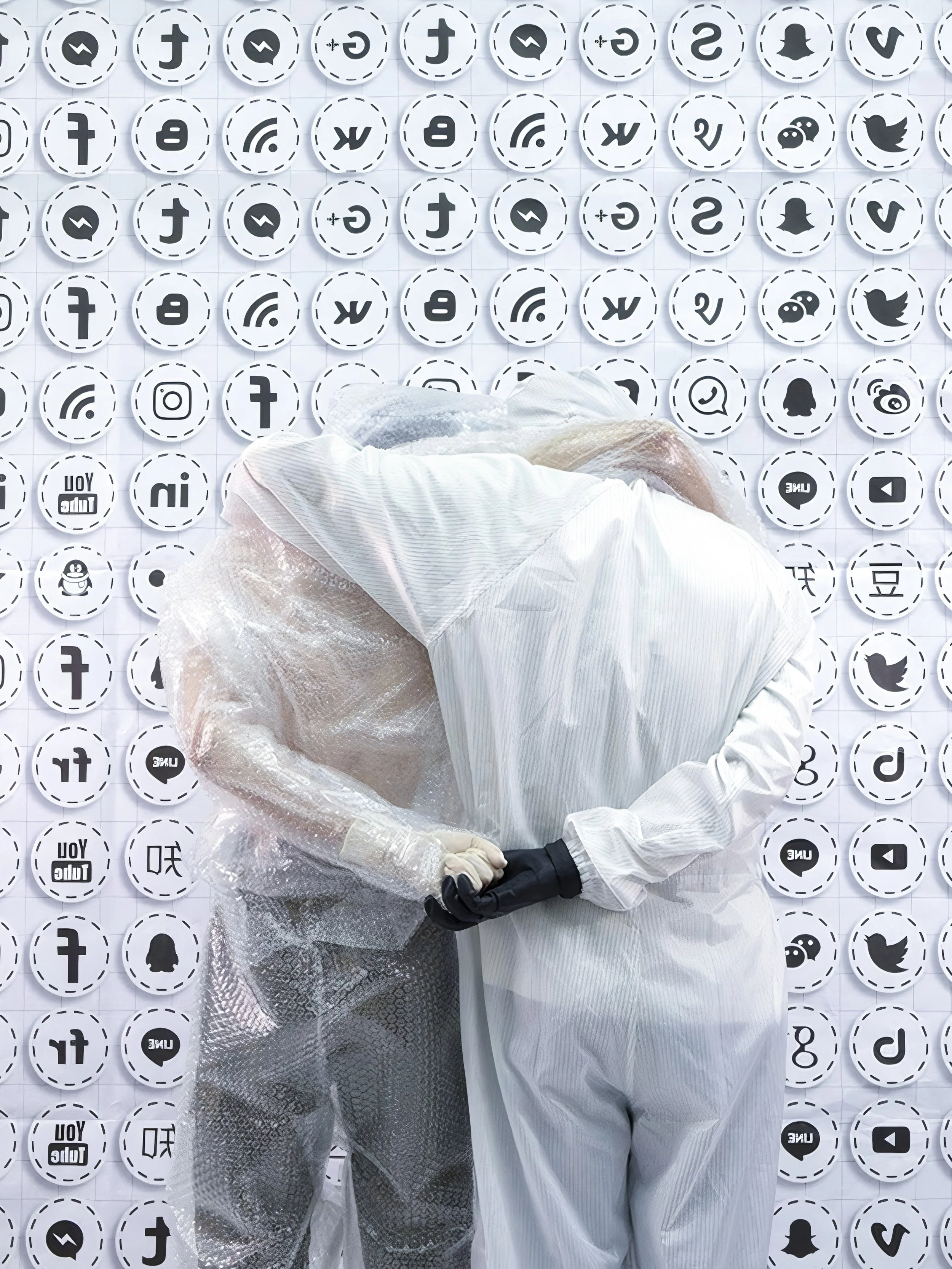10 Questions with Clara Grabowiecki
Clara Grabowiecki is an Argentine visual artist, born in Buenos Aires in 1983. She studied in the studio of the prestigious Argentine visual artist Carlos Gorriarena, with whom she deepened her interest in artistic research in colour. Her influence can be seen reflected in a radical vision about art that includes a special rigour and commitment in the way of approaching the work. In 2008, she was selected as artist-in-residence of the renowned Takt Berlin Artist Residency, an experience that broadened her creative horizons and fundamentally changed her artistic perspective. In 2016, driven by her curiosity, Clara moved to Europe, where she had the opportunity to immerse herself in the local art scene and make meaningful connections with other contemporary artists. There, she completed the Master's in Research in Art and Design at the Autonomous University of Barcelona. Throughout her career, she has exhibited her work in Buenos Aires, Berlin, Beijing, Barcelona, Miami and London, in renowned spaces such as the San Martín Cultural Centre, the Recoleta Cultural Centre, Appetite Contemporary Art, ArteBA, Jardín Oculto, Wir Gallery, Big Sur, Fábrica Escocesa, La Virreina Centro de la Imagen, among others. Her work has been an integral part of notable festivals and exhibitions, such as the LOOP Festival, Visual Brasil and Teorema Festival. Her work has been featured in influential publications such as Diario Clarín, Revista Ramona, Arte al Día, Revista Ulisses and Wicked Mag. In November 2024, Clara presented and A/A/Performance in collaboration with the producer Angelo Repetto in Kunsthaus Zurich for Digital Arts Zurich. Also, for Night of the Museums in Sion, Switzerland, she presented an audiovisual short film called "Une histoire dans une historie", which was produced and supported by the Open Air Museum Art Valais in Switzerland. She was selected by the residence for artists Saikoneon in Tokyo, Japan, to develop her work for a month in October 2025. Clara is preparing a solo exhibition for next year at Bernapark Museum, Berna, Switzerland.
Clara Grabowiecki - Portrait
ARTIST STATEMENT
The work of Clara Grabowiecki is a journey into an interior cosmos. Passing through the figurative to the abstract, the images construct cosmologies of the imagination. The human and non-human world interacts in interspecies entanglements that spread from dogs to botanical elements and spiral into atomic levels. An interwoven mesh of reality and understanding is threaded through physical and dream-worlds that narrate our infinitely complex interconnectedness. The surface of painting is the arena in which Grabowiecki uses colour and form to align vibrational tendencies. The images are recognisable by a confident colour palette that does not shy away from tropical tones and metallic glimmers that connect to a collective unconscious of the cultural psyche. The image contains both science fiction and ancient narratives in a timeless suspension. The space of the mind is represented as a crystallised gesture to truth and purity. The crystal is symbolic of the purity of the soul when matter compresses into transparency.
The Round, Oil on linen, 45 x 35 cm, 2024 © Clara Grabowiecki
INTERVIEW
What first inspired you to become an artist, and how has your journey evolved over the years?
As a child, I used to collect keychains, stamps, coins, banknotes, cigarette boxes, and cards. I had a compulsion to gather as much as I could. If I watched a film by a director, I had to see everything they had made in order to understand them. I started painting in I have memory, and throughout my years of painting, I went through different phases. I loved painting so much that I thought I could paint everything. Over time and with practice, my technique became more refined. I no longer created images that were understood as part of everyday reality. Instead, I found a raw and stripped-down approach. What I mean is that my technique became more honest when I started painting what I saw inside myself. I stopped using photos or external models that I could see with my eyes. Dreams and visions began to guide me. I realised that, for me, the story was told through being precise with colour and expressing the narratives that emerged from it.
Later on, I started working with digital technology, creating visuals using video editing and animation software because I felt the need to leave my studio. I wanted to make things with people. I had the urge to share my process—the mixing decisions. I enjoy experiencing this process together with the audience. It comforts me to see people's reactions and to hear their thoughts.
I'm very drawn to clichés and commonplaces because we're surrounded by them every day. What we call reality is often absurd, yet we've normalised it. Through painting, I discovered how colour and form can vibrate with meaning, aligning with invisible frequencies.
You studied with Carlos Gorriarena, known for his strong use of colour. How did his teachings influence your approach to painting?
Carlos was a huge influence on me, and I'm lucky to have been a student of one of the most prestigious artists of his time in Argentina—learning not only directly from him, but also, through him, from the legacy of his own teachers: Lucio Fontana and Antonio Berni. I remember Gorriarena telling me, "You have to paint as if you were going to be shottomorrow." At 20, I started taking classes in his atelier in San Telmo, Buenos Aires, and we spent months painting nothing but rhombuses. Blank sheets were divided into spaces of similar size and shape. Within them, we had to choose colours—experiment, cover, intuit, let them emerge—and see how they worked together. Some people dropped out of the course out of boredom; I found it fascinating. I loved learning from someone who had spent his entire life painting—facing compositions, characters, and colours, always trying to understand what was happening there. There was something so deep in the emotion of his characters, in the sometimes extreme narrative with political undertones, other times less literal, but always beautiful.
Blurring the Boundaries of Reality, Digital, Variable Measures, 2024 © Clara Grabowiecki
Vibrational Alignments, Digital, Variable Measures, 2024 © Clara Grabowiecki
Your work shifts between figurative and abstract forms. How do you decide which direction a piece will take?
In the early stages of a painting, I might start with a more figurative approach, where shapes are clearer and more recognisable. But as I continue, I feel the tension build: the forms begin to lose their representational clarity, and I allow them to dissolve into abstraction. It's like moving with a current, with a rhythm—the image chooses if it stays or disappears. Ultimately, it's about making the invisible visible. I find beauty in the deconstruction of images. I seek change, vitality, and exploration, and I also like my paintings to be large and to exceed the scale of my own body. This way, the subject-object relationship shifts and expands.
What does your creative process look like? Do you follow a structured method, or is it more intuitive?
I believe creation uses disorder to bring new answers to light. Not forcing, but staying attentive to revelations. My creative process is deeply intuitive, more like a dialogue between myself and the materials I'm working with. It starts with a digital drawing about something that comes to mind—sometimes inspired by a memory, a vision, or even a dream. I'll often sketch ideas or make small notes, but the real journey begins when I start putting paint on canvas. A love for music and dance is what led me to start working with visuals inspired by paintings.
Colour plays a vital role in your work. What draws you to specific palettes, and how do you use colour to create meaning?
Colour is everything for me. It's not just visual—it's vibrational, emotional, energetic. I'm drawn to vibrant, sometimes even dissonant palettes because they can shake perception. Colour has the power to take the viewer beyond the image, into a more embodied experience.
I use colour as a narrative force—to activate form, to express what can't be said in words. Even when there seems to be a logical structure, colour always carries a layer of unpredictability. My goal is to become more and more conscious with each choice, to understand the frequencies I'm working with.
I'm interested in the abstraction of colour—colour that operates symbolically, that creates a specific mood or atmosphere when combined with others. I see colour as a messenger, carrying the emotion and energy of a narrative.
Your paintings explore interspecies connections and cosmic entanglements. What interests you about these themes, and how do they shape your artistic vision?
In my series Memories of Futurness, beings that exist between the human and non-human realms travel from the future to the past to recover ancient knowledge hidden in crystals deep within the Earth. These characters carry purpose, mystery, and a message: we've forgotten something vital.
Nature appears not as a passive landscape, but as a sacred force. I see it as a refuge, not a commodity. I'm inspired by Édouard Glissant's concept of the Traité du Tout-Monde—a place where complexity, diversity, and organic harmony reconnect us to the deeper meaning of being alive.
My work explores perception: what lingers in memory, what fades, and what remains beneath the surface. I imagine new worlds where coexistence is possible, where we move beyond binaries and into relational, peaceful ways of being.
Having lived and exhibited in different parts of the world, how have these cultural experiences influenced your practice?
Collaboration and travel have opened new pathways for me. I had a studio for many years at Patio del Liceo in Buenos Aires. One day, Marta Minujín visited. She asked if I was an artist—I said yes. She looked at us all and said, "Work more as a group. Merge your ideas and energies."
That advice resonated deeply, and some time later, in 2024, I began a months-long collaboration with Angelo Repetto. We wanted to rehearse together in person—he was living in Zürich and I was in Barcelona—so we found ways to meet and create. One of those times was during a residency in the mountains near Zürich; the second was at Résidence Mont d'Or Art Valais. Meeting Jasm One in Sion—the curator behind the Art Valais Open Air Museum—was also a meaningful encounter. It gave me a glimpse into his curatorial vision and left a lasting impression.
We were invited by Hans Peter Riegel to create a piece specifically for the Digital Arts Zürich festival. I believe he had a sharp intuition in pairing me with a musician like Angelo to develop an audiovisual work, which premiered as a live performance at Kunsthaus Zürich.
Ultimately, what do you want to communicate with your art?
I want to evoke a sense of wonder and recognition: that we're all interconnected. If there's a viable future for humanity, I believe it will be transpersonal, not led by the ego but by a collective consciousness that holds infinite wisdom.
The body—what we call matter—is full of stories, textures, and frequencies. These can be understood as languages, as other bodies. Within that web pulses a unity. What we thought was a single story is actually part of the cosmos, part of the Earth, part of something divine and unknowable.
“Between Worlds” Live AV with Angelo Repeto at Digital Arts Zurich, 2024
You're preparing for a solo show at the Bernapark Museum in 2026. Can you give us a glimpse of what to expect from this upcoming exhibition?
The solo exhibition I'm working on, which will take place next year in Bern, Switzerland, is very important to me. These are works I've been developing over the past three years, and they will be exhibited for the first time. I'm excited to see the result of so much time and so many different moments come together, to perceive it as a whole, and to share it with others. I have no doubt it will be deeply meaningful for me.
Looking ahead, how do you see your work evolving in the future? What is your biggest goal for the years to come?
I experience my work in three different ways. One is in the studio, working alone and preparing for exhibitions that are intentional and structured. Another is the relationship with private collectors—when someone chooses to live with a work, and it becomes part of their world. The third is through festivals, where I mix live visuals and a collective dynamic emerges—people dance, emotions are shared, and art becomes experience.
This year, one of my greatest motivations is painting Mount Fuji in Japan. It's a spiritually significant place that's been present in my work for some time. I was selected by Saikoneon for a month-long residency in October 2025. I'll also perform at the Sfora Festival in Poland, a festival that takes place in nature. In June, a new audiovisual work will be shown in Art Basel, organised by Radio X Basel, in the event called OMG, Franck!. And finally, though certainly not least, I'll participate in SOFF Creative Residence, a program that's running by Ori Fineberg in the Czech Republic, which culminates in a group show this August at the amazing venue MaHalla in Berlin.
Artist’s Talk
Al-Tiba9 Interviews is a promotional platform for artists to articulate their vision and engage them with our diverse readership through a published art dialogue. The artists are interviewed by Mohamed Benhadj, the founder & curator of Al-Tiba9, to highlight their artistic careers and introduce them to the international contemporary art scene across our vast network of museums, galleries, art professionals, art dealers, collectors, and art lovers across the globe.




















